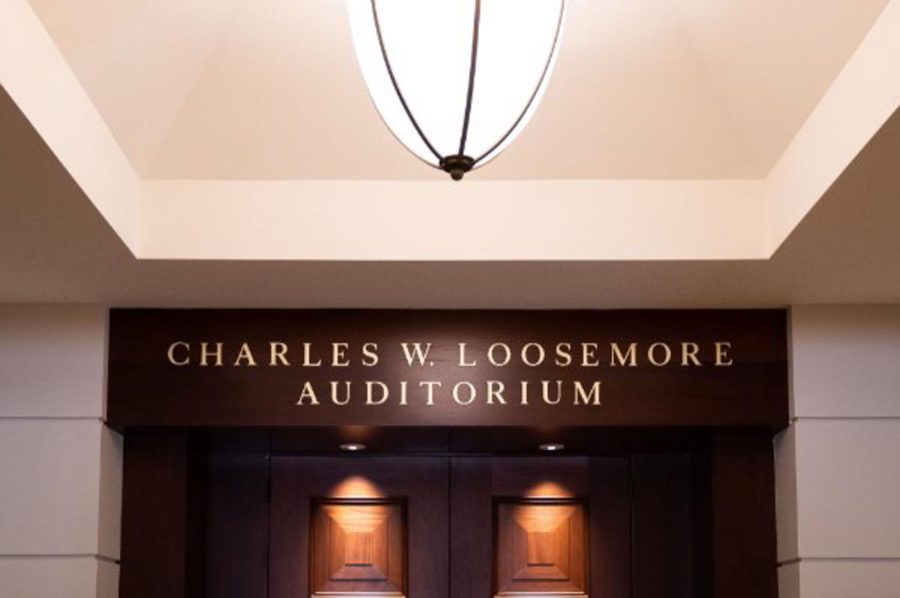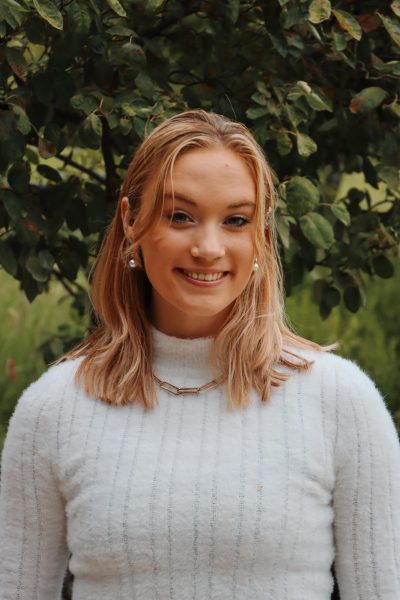James Carey Memorial Lecture at GV seeks to educate on sharing scientific information
Oct 3, 2022
Grand Valley State University hosted its 11th annual James W. Carey Memorial Lecture on Sept. 28 to address potential disconnects between experts and everyday citizens when presenting complex, scientific information.
The lecture, which took place in GVSU’s Loosemoore Auditorium on its Pew Campus, featured Dr. Bruce Kirchoff as its keynote speaker.
Dr. Kirchoff has studied the communication of detailed scientific information to audiences for the last several years. Working in partnership with The Alan Alda Center for Communicating Science at Stony Brook University and the University of North Carolina at Greensboro Speaking Center, Kirchoff helps scientists share their work in meaningful ways.
The lecture focused on honoring a new way to think about communication and the pillars of transforming dense data and content into easily understandable information for the average person.
Scientists are not often perceived as warm or approachable, Kirchoff said. This, he added, contributes to a disconnect from the audience when conveying difficult or dense information.
Kirchoff said that scientists – or any public speakers – should discuss their content in the same way they think about their work and not necessarily how other scientists or the media might present it.
Kirchoff’s research has shown that sharing personal elements have been extremely effective in the engagement and understanding of content from the audience. He advised using language like “I am puzzled by this problem,” or “My observations have led me to…” to speak from personal experience as well as create a level of trust with the audience.
“The public is hungry for real, authentic knowledge from a scientist that is engaged in their audience and engaged in their knowledge,” Kirchoff said. “That’s where the value is from, having warmer scientists and more approachable scientists, they share this excitement of discovery.”
Building trust with an audience also comes from having a clear message that is easy to follow, Kirchoff said. Sharing the importance of the information, why the speaker cares and why the audience should care makes the content more digestible and more influential.
Kirchoff described the central attitude of science as one of embracing the unknown with radical openness. He said it’s every scientist’s goal to create a space where they can have a connection with the audience that is radically open to potentially contentious ideas and open to hearing new insights.
“You want to give your audience the thing that they want the most, which I think is connection,” Kirchoff said. “Think about what you’re willing to do to be connected with your friends or a loved one. Scientists should be a trusted source by being human beings and sharing that humanness with you, their audiences.”
GVSU graduate student Jay McBride says he took a lot away from the presentation, drawing parallels to his graduate work and research.
“A takeaway from a question posed to Bruce is actually along the lines of (a paper) I’m writing regarding an anthropogenic approach to communication, whether it’s through texts, digital media or interpersonal communication,” McBride said. “I am investigating Mr. Rogers from Mr. Rogers’ Neighborhood and how he has presented content to children that discussed socially controversial issues in a manner that could be broken down simply.”
Fellow graduate student Daniel Rikkers, who was also in attendance, said he will be using the things he learned from Dr. Kirchoff’s lecture to improve his public speaking.
“I took away the importance of forming bonds with your audience,” Rikkers said. “I thought it was really cool how you get to know people, just the way they observe your message, and I will definitely think of that the next time I speak in front of coworkers.”























